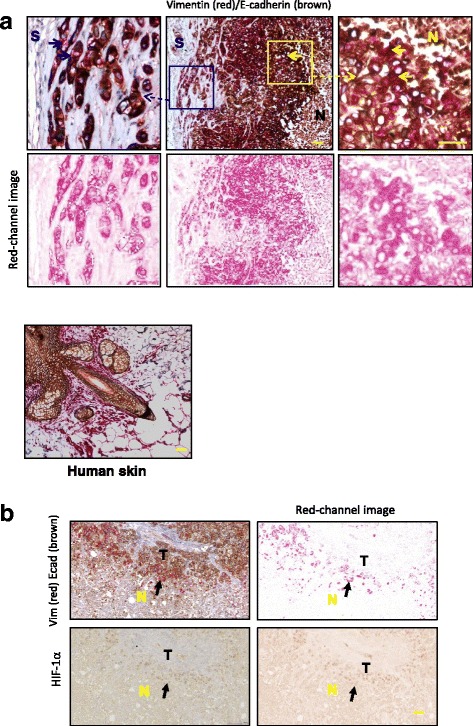Fig. 1.

a Epithelial-to-mesenchymal transition (EMT) in MDA-MB-468 xenograft tumors. Vimentin-positive cells (red) indicating EMT were seen in regions along the tumor-stroma interface (blue arrows) and more continuously along the tumor-necrosis border (yellow arrows). The vimentin-positive cells at the invasion front were arranged in thin rows of individual cells interspersed between stromal (S) connective tissue (blue arrows). Vimentin-positive cells along the necrosis (N) front were also arranged in a thin border (yellow arrows). A red-colored deconvoluted image is shown to enable discernment of vimentin immunohistochemical staining. E-cadherin/vimentin-positive control: human skin. Scale bars represent 50 μm. b Evidence of epithelial-mesenchymal plasticity in MDA-MB-468 cell xenografts in regions associated with hypoxia. Images at right are red-channel images (derived from image using the ImageJ Colour Deconvolution plugin) of images at left to more clearly illustrate features. Area of necrosis is denoted with yellow N, tumor is denoted with black T. Hypoxia-inducible factor (HIF)-1α-positive cells were seen along the tumor-necrosis border (black arrow), and the area was also positive for vimentin (scale bar = 50 μM). For another example, see Additional file 1: Figure S1
